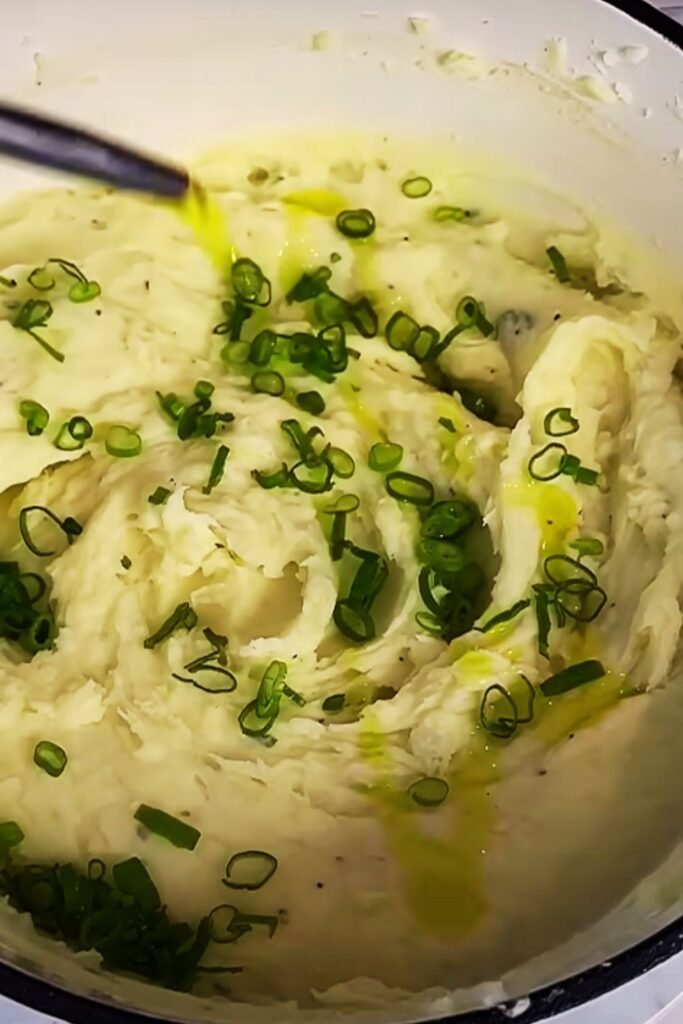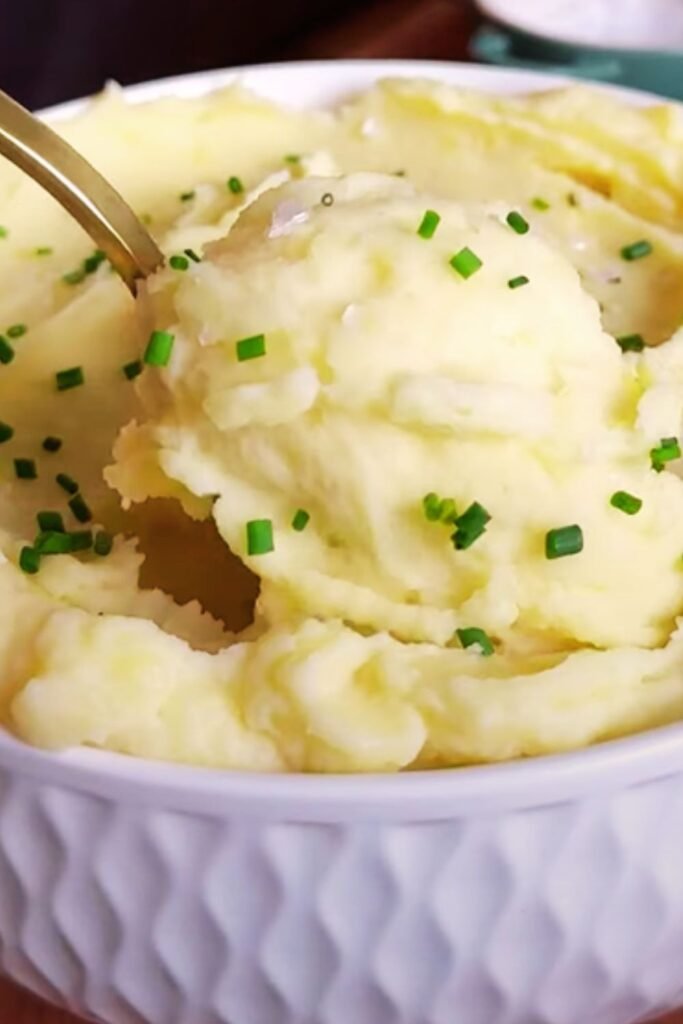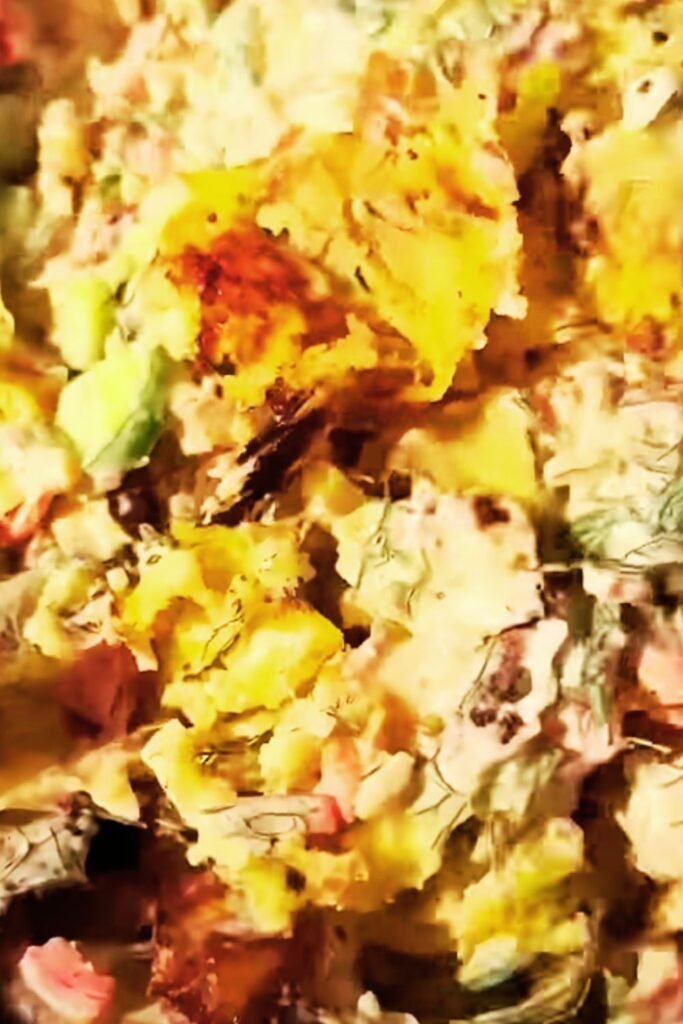I’ve been making mashed potatoes for over fifteen years, and I can confidently say that perfecting this seemingly simple side dish took me longer than I’d like to admit. Through countless family dinners, holiday gatherings, and weeknight meals, I’ve discovered the secrets to creating the smoothest, creamiest mashed potatoes that will have your guests asking for the recipe every single time.
There’s something magical about a bowl of perfectly prepared mashed potatoes – the way they melt on your tongue, complement any main dish, and bring comfort to even the most stressful days. Today, I’m sharing my foolproof method that transforms ordinary potatoes into an extraordinary side dish that elevates any meal from good to unforgettable.
The Foundation: Understanding Your Potatoes
Before we dive into the technique, let me share what I’ve learned about choosing the right potatoes. Not all potatoes are created equal when it comes to mashing, and this choice will make or break your final result.
Russet Potatoes: These are my go-to choice for mashed potatoes. Their high starch content and low moisture create that fluffy, light texture we all crave. I’ve found that Russets absorb butter and cream beautifully without becoming gluey.
Yukon Gold Potatoes: My second favorite option, these golden beauties offer a naturally buttery flavor and creamy texture. They contain more moisture than Russets, which means they require slightly less liquid additions.
Red Potatoes: While these waxy potatoes hold their shape well for roasting, I avoid them for mashing. Their low starch content can result in dense, gluey mashed potatoes that lack the fluffy texture we’re after.
Essential Equipment and Ingredients
Over the years, I’ve streamlined my mashed potato process by ensuring I have the right tools and ingredients on hand. Here’s what you’ll need:
Equipment Checklist:
- Large pot for boiling
- Potato masher or ricer
- Fine-mesh strainer
- Large mixing bowl
- Wooden spoon for final mixing
- Sharp knife for cutting potatoes
Ingredient Requirements:
| Ingredient | Amount (Serves 6-8) | Purpose | Quality Tips |
|---|---|---|---|
| Russet Potatoes | 3 pounds | Base ingredient | Choose potatoes of similar size for even cooking |
| Unsalted Butter | 6-8 tablespoons | Richness and flavor | Use European-style butter for extra creaminess |
| Heavy Cream | 1/2 to 3/4 cup | Smooth texture | Warm before adding to prevent cooling |
| Whole Milk | 1/4 cup | Additional moisture | Room temperature works best |
| Salt | 1-2 teaspoons | Flavor enhancement | Kosher salt dissolves more evenly |
| White Pepper | 1/4 teaspoon | Subtle heat | Maintains the clean white appearance |

My Step-by-Step Method for Perfect Mashed Potatoes
After years of experimenting, I’ve developed this foolproof process that consistently delivers restaurant-quality results at home.
Step 1: Preparation and Cutting
I start by washing my potatoes thoroughly under cold running water, scrubbing away any dirt or eyes. While some people prefer to peel before cooking, I’ve found that cooking potatoes with their skins on actually helps them retain more starch, which contributes to better texture.
I cut my potatoes into evenly sized chunks, about 1.5 to 2 inches. This ensures uniform cooking – nothing frustrates me more than having some pieces perfectly tender while others remain firm in the center.
Step 2: The Cooking Process
I place my cut potatoes in a large pot and cover them with cold water by about 2 inches. This is crucial – starting with cold water ensures even cooking from the outside in. I add a generous tablespoon of salt to the water, which seasons the potatoes from within as they cook.
I bring the water to a rolling boil over high heat, then reduce to medium-high and cook for 15-20 minutes, depending on the size of my potato chunks. I test for doneness by piercing the largest piece with a fork – it should slide in easily with no resistance.
Step 3: Draining and Drying
Here’s where many home cooks go wrong – they skip the drying step. I drain my potatoes thoroughly in a fine-mesh strainer, then return them to the pot over low heat for 1-2 minutes. This evaporates excess moisture that would otherwise dilute the final product and create watery mashed potatoes.
Step 4: The Mashing Technique
I remove the pot from heat and immediately begin peeling the skins off while the potatoes are still hot. The skins slip off easily at this temperature. Then comes the critical step – I mash the potatoes while they’re still steaming hot.
I use a traditional potato masher for the initial breaking down, working in an up-and-down motion rather than stirring, which can develop the gluten and create a gluey texture. For ultra-smooth results, I sometimes pass the mashed potatoes through a ricer or food mill.

Step 5: Adding the Enrichments
I warm my heavy cream in a small saucepan until it’s just steaming – cold dairy will cool down the potatoes and affect the final texture. I add the butter first, mashing it in completely, then gradually incorporate the warm cream and milk.
The key here is patience. I add the liquids gradually, mixing gently with a wooden spoon between additions. This prevents the potatoes from becoming too loose too quickly and allows me to achieve the perfect consistency.
Troubleshooting Common Problems
Through my years of making mashed potatoes, I’ve encountered every possible mishap. Here are the most common issues and my solutions:
Problem: Gluey or Sticky Texture
Cause: Overmixing or using the wrong potato variety My Solution: I always use starchy potatoes and mix minimally once liquids are added. If this happens, I thin out the mixture with more warm cream and serve immediately.
Problem: Lumpy Consistency
Cause: Insufficient mashing or uneven cooking My Solution: I ensure potatoes are fully cooked and use a ricer for the smoothest results. For emergency fixes, I press the mixture through a fine-mesh strainer.
Problem: Too Thin or Watery
Cause: Excess moisture or too much liquid added My Solution: I return the mixture to low heat and stir constantly until excess moisture evaporates, then adjust seasoning.
Problem: Bland Flavor
Cause: Insufficient seasoning or unsalted cooking water My Solution: I always salt the cooking water generously and taste for seasoning at the end, adjusting with salt and white pepper.
Advanced Techniques and Variations
Once you’ve mastered the basic technique, I encourage experimenting with these variations that I’ve developed over time:
Garlic Mashed Potatoes
I roast 6-8 whole garlic cloves with the potatoes during the last 30 minutes of cooking, then mash them in with the potatoes. The roasted garlic adds a sweet, mellow flavor that’s never overpowering.
Herb-Infused Version
I steep fresh herbs like rosemary or thyme in the warming cream for 10 minutes before straining and adding to the potatoes. This creates a subtle, sophisticated flavor profile.
Make-Ahead Method
For entertaining, I prepare the mashed potatoes up to 2 hours ahead, then keep them warm in a slow cooker on the “warm” setting, stirring occasionally and adding cream as needed.
Nutritional Information and Dietary Considerations
Understanding the nutritional profile helps me make informed decisions about serving sizes and modifications:
| Nutrient | Per 1-Cup Serving | Daily Value % |
|---|---|---|
| Calories | 320 | 16% |
| Total Fat | 18g | 23% |
| Saturated Fat | 11g | 55% |
| Sodium | 580mg | 25% |
| Carbohydrates | 36g | 13% |
| Fiber | 3g | 11% |
| Protein | 6g | 12% |
| Potassium | 620mg | 13% |
| Vitamin C | 15mg | 17% |
Dietary Modifications I’ve Successfully Tested:
Dairy-Free Version: I substitute coconut cream and vegan butter, maintaining the same ratios. The texture remains creamy, though the flavor profile changes slightly.
Lower-Calorie Option: I use low-fat milk and reduce butter by half, adding roasted garlic or herbs for flavor compensation.
Keto-Friendly Alternative: I substitute cauliflower for half the potatoes, though this significantly changes the texture and flavor.

Serving Suggestions and Pairings
Mashed potatoes serve as the perfect canvas for numerous dishes. Here are my favorite pairing suggestions based on years of menu planning:
Classic Comfort Combinations:
- Roasted chicken with herb gravy
- Braised short ribs with red wine reduction
- Meatloaf with mushroom gravy
- Grilled salmon with lemon butter
- Pork tenderloin with apple compote
Holiday Menu Integration:
During Thanksgiving, I serve these alongside turkey, green bean casserole, and cranberry sauce. The creamy texture provides a perfect balance to the meal’s various flavors and textures.
Leftover Transformations:
I never waste leftover mashed potatoes. They become the base for shepherd’s pie, get formed into patties for pan-frying, or are mixed into bread dough for incredibly soft dinner rolls.
Storage and Reheating Guidelines
Proper storage extends the life of your mashed potatoes and maintains their quality:
Refrigeration Method:
I store leftover mashed potatoes in the refrigerator for up to 4 days in airtight containers. Before storing, I let them cool to room temperature to prevent condensation.
Reheating Techniques:
Microwave Method: I add 2-3 tablespoons of milk or cream per cup of potatoes, cover, and microwave in 30-second intervals, stirring between each interval.
Stovetop Method: I place the potatoes in a saucepan over low heat, adding warm milk gradually while stirring constantly until heated through and creamy.
Oven Method: For larger quantities, I spread the potatoes in a baking dish, dot with butter, cover with foil, and reheat at 350°F for 20-25 minutes.
Freezing Guidelines:
While possible, I rarely freeze mashed potatoes as the texture changes significantly. If freezing is necessary, I add extra cream before freezing and expect to adjust the consistency upon reheating.
Seasonal Adaptations and Special Occasions
Throughout the year, I adapt my basic recipe to complement seasonal ingredients and special occasions:
Spring Variations:
I incorporate fresh chives, green onions, or early herbs from my garden. The bright flavors complement lighter spring dishes beautifully.
Summer Modifications:
During hot months, I sometimes serve these at room temperature as a side for grilled meats, adjusting the cream content for a slightly firmer consistency.
Fall Enhancements:
I add roasted butternut squash puree for color and subtle sweetness, perfect for autumn dinner parties.
Winter Comfort Additions:
I sometimes stir in cream cheese or sour cream for extra richness during cold months when hearty comfort food is most appreciated.
Expert Tips from My Kitchen Experience
After making thousands of batches of mashed potatoes, these insights have proven invaluable:
- Temperature Control: I never add cold dairy to hot potatoes – it affects both texture and temperature of the final dish.
- Timing Strategy: I prepare mashed potatoes last in my meal preparation timeline since they’re best served immediately while hot.
- Equipment Investment: A quality potato ricer creates the smoothest texture, though a good masher works perfectly for most home cooks.
- Salt Timing: I season the cooking water heavily – this is my primary seasoning opportunity, as salt added later doesn’t penetrate as effectively.
- Butter Quality: I invest in high-quality European butter when possible – the higher fat content makes a noticeable difference in richness.
Frequently Asked Questions
Q: Can I make mashed potatoes ahead of time for a dinner party? I often prepare them 2-3 hours ahead and keep them warm in a slow cooker on the lowest setting. I stir occasionally and add warm cream as needed to maintain consistency. For best results, I avoid making them more than a day ahead.
Q: Why do my mashed potatoes sometimes turn out gluey? This usually happens from overmixing once the liquid is added, or from using waxy potatoes. I always use starchy Russets and mix minimally after adding cream and butter. A gentle folding motion works better than vigorous stirring.
Q: How do I fix mashed potatoes that are too salty? I add more cooked, unsalted potatoes if I have them, or I incorporate additional cream and butter to dilute the saltiness. Sometimes I add a small amount of sugar to balance the flavors.
Q: What’s the best way to reheat leftover mashed potatoes? I prefer the stovetop method with low heat and gradual addition of warm milk or cream. The microwave works for small portions, but I always add liquid first and stir frequently to prevent hot spots.
Q: Can I substitute milk for heavy cream? Yes, though the result will be less rich. I sometimes use half cream and half milk for a lighter version while maintaining good texture. Whole milk works better than low-fat alternatives.
Q: How do I prevent my mashed potatoes from getting cold during meal service? I transfer them to a serving bowl that I’ve warmed in a low oven, and I keep them covered with foil. For buffet service, I use a slow cooker or warming tray set to the lowest temperature.
Q: Is it better to peel potatoes before or after cooking? I cook them with skins on for better starch retention, then peel while hot. The skins slip off easily, and this method produces fluffier results than pre-peeling.
Q: Why do restaurant mashed potatoes taste so much better than mine? Restaurants typically use much more butter and cream than home cooks, often in a 1:1 ratio with the potatoes. They also use high-fat European butter and often add cream cheese or other enrichments.
Q: Can I use a food processor to make mashed potatoes? I strongly advise against this. Food processors can quickly overwork the potatoes, developing gluten and creating a gluey texture. Stick with a masher, ricer, or food mill for best results.
Q: How do I make vegan mashed potatoes that still taste rich? I use full-fat coconut milk or cashew cream with vegan butter. Roasted garlic, nutritional yeast, or herb infusions help compensate for the missing dairy richness.